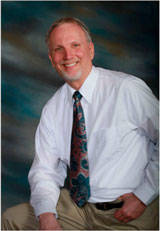During my training as the political action person for the Sumner Education Association, we were told teachers make lousy legislators because they try to be “fair.” Being a state legislator is not about fairness to all, the Washington Education Association speaker said. It’s helping your special interest group and putting them above all other groups in the state.
I’ve thought about that statement many times during the 25 years since I first heard it. The WEA adviser I worked with asked if I wanted to join her in working for the WEA. She eventually became a WEA president. I told her no, because I didn’t like the partisanship and the bias of the WEA.
Recently, I have had two readers ask what my position is when I write my column. I don’t seem to take a stand. I usually describe both sides of an issue. If you read the first part of many of my articles you might think I’m a conservative. If you read the last half, you might believe I’m a liberal. To many, this is waffling. To me, it’s who I really am. I strive to live in the tension between the extremes.
Those who write to criticize my column in letters to the editor are usually conservatives who read part of what I say, ignore my “on the other hand” approach and label me a bleeding-heart liberal. I find this very frustrating. I don’t like to be put in a box and then be reduced to one dimension. I really wish readers would consider all of what I say and then think, rather then taking one sentence and going off on a rant they heard from Rush Limbaugh.
I laughed out loud when one letter-to- the-editor writer said my column was like road kill; she didn’t want to look, but she couldn’t help herself. I appreciate those kinds of comments because humor is a great way to get past emotion to look at issues more objectively. Humor, if used correctly, is a great way to bridge gaps between people with differing views.
I had one liberal reader, a former teaching associate, criticize my perspective when I argued in favor of 72-year-old Richland florist Barronelle Stutzman whose freedom of religion and speech had been attacked over her refusal to arrange flowers for a gay wedding. This reader reacted emotionally to the issue of gay rights without really trying to understand my more nuanced stance, or my questions: “Where’s the harm?” and “Has the First Amendment freedom of religion clause been replaced by ‘equal protection of the laws’ clause found in the 14th Amendment?”
I work to make my columns countercultural – to challenge whatever the prevailing cultural standards are, whether they are liberal or conservative. My goal is to get people to think. Neither liberals nor conservatives have a monopoly on the truth. Truth is found at all places of the political spectrum, along with a great deal of error.
To give one’s opinion in an editorial is what is expected, especially in this polarized society that we live in today. All sides in a debate have valid points that need to be listened to and considered, whether we agree or not.
The political action speaker I mentioned at the beginning of this column was right, at least for me. I would make a lousy legislator because I believe in fairness — in saying and acting for the common good, not for some narrow special interest group.
I constantly struggle to look at issues realistically and to cut through the emotion they create.
My editorial goals are to expose people to a “third way” of looking at hot button issues that is balanced and rational. It takes training to be able to properly weigh information, separating fact from opinion.
Unless readers are exposed to this alternative view, they may never even realize it exists. I am trying to make what is hidden in plain view visible to all, even if it seems difficult for readers to determine what I personally believe.


